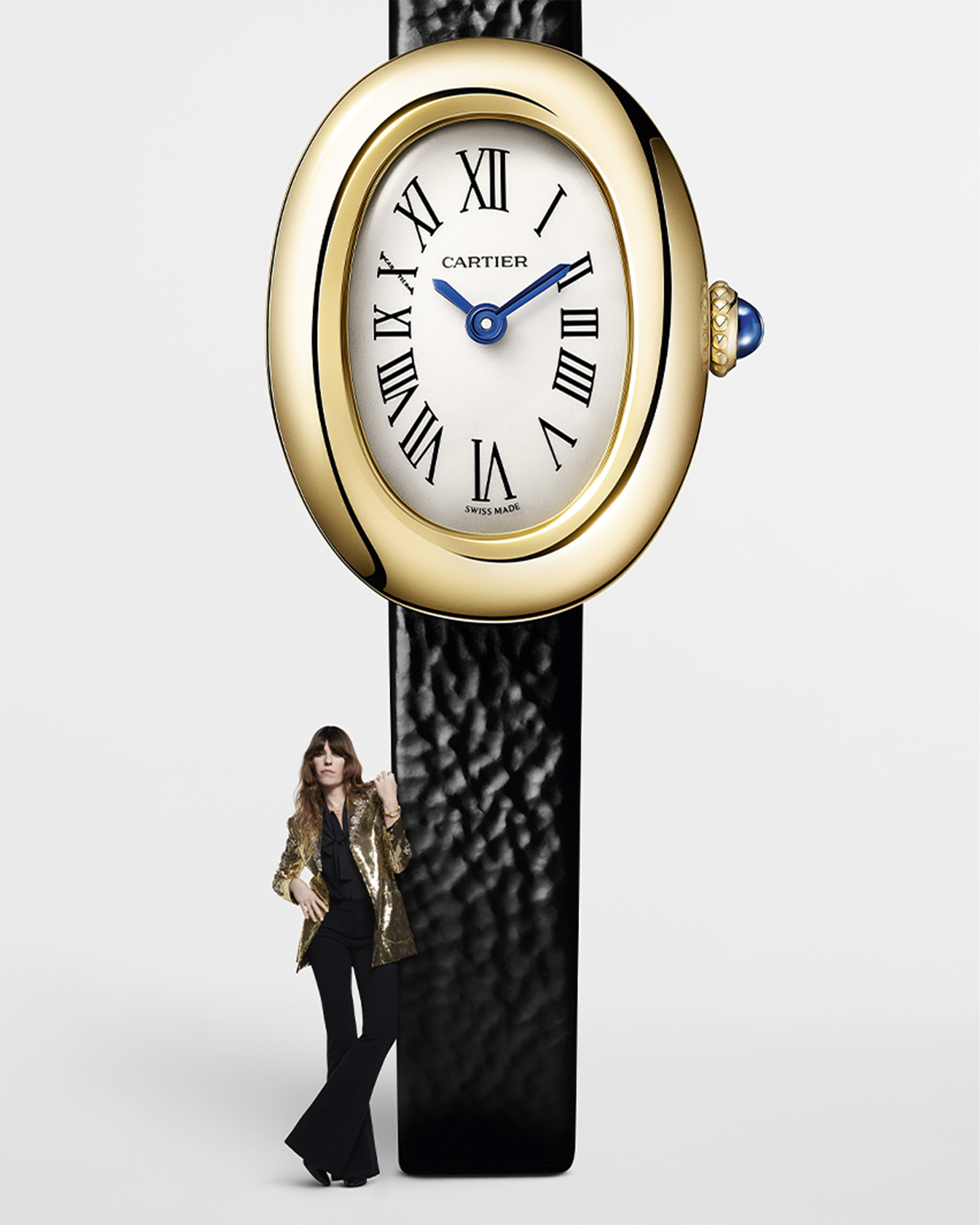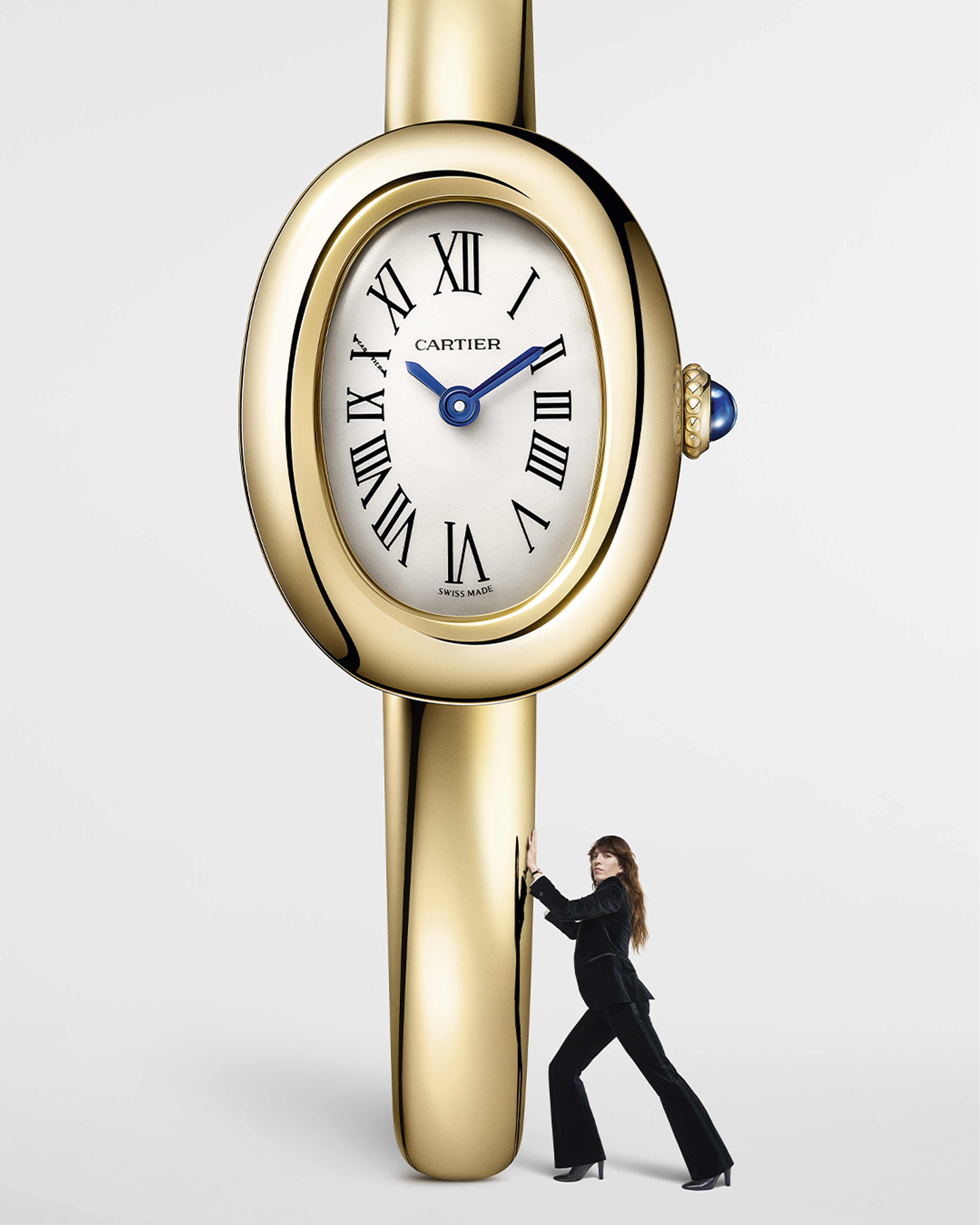News feed

For her 18th birthday, Lou Doillon was gifted a very special piece of jewellery by her mother, Jane Birkin: a Cartier Baignoire watch. Two decades later, the French artist turns the tables, lending her poise to celebrate its milestone.
Like the newly rendered watch, Doillon possesses a timeless individuality and free spirit that grows and expands, adapting to the world around it without ever altering its DNA. Whether she is creating new music, putting pen to paper or embodying a new character, she brings an ineffable quality to her work that is reflected in Cartier’s new campaign for the reimagined watches.
The Baignoire watch is a key part of Cartier’s watchmaking repertoire. After the square shape of the Santos watch in 1904 and the bold design of the Tortue in 1906, the Maison created a watch in 1912 with a rectangular case rounded at the ends. The concept continued to evolve until 1958, with a so-called “curved oval” watch, whose slightly curved case fits the contour of the wrist. This was the first appearance of the watch that was to be named the Baignoire in 1973, already displaying the volume it is known for and its signature details: a domed crystal, a dial with Roman numerals and a smooth gold ribbon. Since then, the Baignoire watch has remained true to itself, appearing in a number of variations.
Like the house’s other core shapes, this iconic watch takes on infinite possible forms, each time resembling only itself.
Today it is reimagined once again to be both miniaturised and amplified. On a miniature case, the bangle encircles the delicate dial in gold. The watch takes on a new role through the delicacy of proportions and precision in craftsmanship, to be slipped on as an essential piece of jewellery that elegantly contrasts with a black leather strap.

Its second iteration sees the watch’s emblematic oval transform into a bangle that appears to flow like liquid gold—available in rose, yellow or white gold. The infinity of time is represented in the seamless circularity that wraps around the contours of the wrist with ease. Drawing upon the Maison’s dual identity as a jeweller and watchmaker, the craftsmen challenge what has been achieved and push the creative boundaries with a sense of curiosity. Proportions shift and functionality changes. Watches are no longer simply instruments for measuring time, or ornaments: they are objects of a third kind whose influence goes beyond what is expected of them.
“As Cartier was a jeweller before being a watchmaker, a Cartier watch blurs the boundaries between these two founding crafts and makes it possible to capture the best of both,” says Marie-Laure Cérède, creative director of jewellery and watchmaking for the house. “This combination has resulted in the sleek and sophisticated design of the mini Baignoire.”
“The combination of a beaded bracelet with a pure line and a miniature dial without any attributes gives this aesthetic reference to our heritage a sublime touch. The mini Baignoire becomes a piece of jewellery.”









